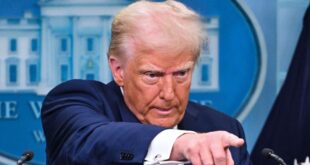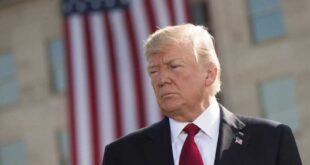Manish Kumar
India and Russia enjoy “Special and privileged strategic partnership”, which entails multidimensional cooperation extending to all areas of the bilateral relationship especially in the areas of political, security, trade and economy, defense, education, science & technology, culture, and people to people. Although the multidimensional relationship has not translated into a strong trading partnership, the pandemic presents huge opportunities for businesses of the two countries. Businesses of both countries can realign their priorities and interests to build robust trade & economic ties grounded on historical trust and mutual goodwill. Governments of both countries have shown strong intent to make the economic partnership strong. Now is the time to sow the seed of this intent and tap the potential of two large economies.
The economic impact of the COVID-19 on India and Russia has been hugely disruptive. The rising cases of infection are a cause of concern for both nations. However, both countries have some of the lowest death rates and a higher relative rate of recovery in comparison to other large countries.
International agencies like the World Bank and credit agencies have downgraded India’s growth for the fiscal year 2021 with the lowest figures, International Monetary Fund (IMF) has predicted 1.9% GDP growth for India for 2021-22 which is highest amongst all G-20 economies and this says a lot about optimism about the Indian economy in post-pandemic phase. Similarly, for Russia, the IMF estimates that the pandemic will result in the Russian economy contracting by 5.5 percent before achieving economic growth of 3.5 percent in 2021.
The imposition of one of the strictest and longest lockdowns in the world has caused the loss of employment of approximately 140 million across sectors such as tourism, hospitality, construction, services, and manufacturing. According to official statistics, the Russian economy has witnessed a surge in the unemployment rate by 30%. But the figures are believed to be vastly underestimated. This is due to the existence of a large informal sector that is estimated to be between 30-40 percent of GDP.
In terms of International Trade, Indian exports are down by 60.3% in April 2020. Owing to supply chain disruptions in China, India is facing a crisis in imports of raw materials in key sectors such as pharmaceuticals, auto components, electronics, construction inventories in such areas are running down since more than 30 percent of imports come from China. The Russian economy is heavily dependent upon energy. The economic slowdown and the crash of energy prices have led to some regions of Russia facing threats of ‘highest budget deficits’ in two decades.
Every crisis presents an opportunity. The data on the ground suggests that both the nations are well-positioned to tackle the impacts of the pandemic by leveraging their macroeconomic stability and foreign reserves. The Indian government is also aiming to attract companies that wish to move out of China or are looking for an alternative to China. Russian companies are also looking for diversification of their sourcing and consumer base to non-Chinese territories.
The Indian government has unveiled more than $260 billion of economic stimulus to address the impact of the pandemic. The central government has asked states and regional authorities to create a land pool for manufacturing activities, rules related labour laws, FDI and major economic reforms that have been initiated in last week or so to leverage the opportunities created by COVID-19.
Russia has earmarked 8.7 trillion Rubles ($123 billion) to jump-start its economy by the end of 2021 as the country eases a prolonged coronavirus lockdown which triggered the deepest contraction since 2009. The good sign is that the Ruble is down only 10% since the start of the year, despite fall in the oil prices by more than a third, reduction in the total oil production as part of a renewed OPEC+ deal with Saudi Arabia. Additionally, Russia’s overall international reserves (a quarter of which sit in the rainy day National Welfare Fund), has increased this year.
It is in this larger economic context of both countries dealing with COVID-19, the following areas have been identified for businesses were opportunities for realising the $30 billion bilateral trade target. Apart from the already flourishing energy & defense sectors, multiple opportunities lie for both the countries in the economic aspects of manufacturing, digital technologies, health-tech, infrastructure, pharmaceuticals, agrochemicals, agri-products, leather, timber, paper pulp, pharmaceuticals, and human resources.
Using Russian-origin equipment for Make in India can be a game-changer for both countries. Businesses from both countries can leverage the opportunities created by the post-COVID world since India is consciously working towards making its economy more diverse, resilient, and more attractive to global manufacturing & supply chains. India, with its location, its massive labour pool, and large consumer market is the ideal country to attract companies. While Russian companies with their advanced technologies and products are eagerly looking for a market.
Russia has become an agricultural powerhouse in the last few years. Russia can play a big role in supplying legumes, edible oil, and organic agrochemicals to import requirements of India. Packaged food items and FMCG producers from Russia can tap the fastest growing retail market in India. Similarly, Indian marine producers’ dairy producers can actively seek markets in Russia.
India is well recognized in the field of pharmaceuticals, something which has been further upgraded during the pandemic. The decision to send Hydrocholoquine to Russia and 70 countries was a positive message. The recent approval by Russian governments of the antiviral drug Avifavir to treat COVID-19 is good news for India as it is based on an influenza medication already in advanced clinical trials in India. Avifavir, described by its developers in Russia as perhaps the most promising anti-COVID-19 drug in the world, is derived from Favipiravir. Mumbai-based Glenmark Pharmaceuticals announced last week that Favipiravir is under phase 3 clinical trials, the penultimate stage in drug testing in India. Joint development and marketing of pharmaceuticals drugs are other big areas for both countries to explore in a post COVID world.
COVID-19 unleashed a health care revolution across the world. Indian startups supported by Invest India and Russian startup platforms like Startup Skolkovo Foundation should ride this wave of health-tech revolution. India should partner with Russian companies like Sistema, those are willing to sell products to Indian partners for mass production in India. A joint effort in the digital revolution is crucial for successful collaboration between the two countries. Digitally assisted deliveries digital applications in health can be a great marriage of the Indo- Russian talents.
In the past, Russia has been compensating for its lost workforce by getting labour from Central Asia, Korea, and China; Russia will be cautious about the last two countries post-COVID. The question of India doing more in terms of migration was raised by PM Modi to President Putin in a detailed dialogue in Vladivostok. A small beginning has already been made but strong policy supported by efficient bureaucracies of both countries is necessary to fast track this sphere of collaboration.
Apart from the above-mentioned sectors, there are strategic priorities for both countries evidenced by recent high-level dialogues between the leadership of both countries however progress on the ground has been slow.
Billion Dollar projects like the soft credit line for the Far East for Russia, FTA with Eurasia Economic Union and North-South Trade Corridor, Eastern port trade between Far East Russia and Chennai, exploration of a new sea route to source crude oil and LNG from the Russian Arctic are some of the most strategically important aspects for both countries. These measures would take the trade and economic ties between the two time-tested friends to new heights.
 Geostrategic Media Political Commentary, Analysis, Security, Defense
Geostrategic Media Political Commentary, Analysis, Security, Defense





